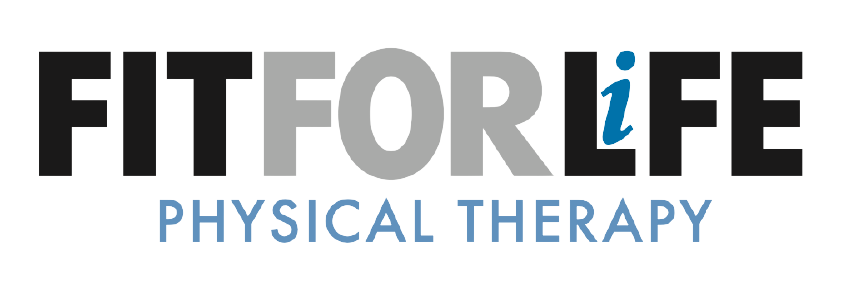Running or Walking Gait Impairments
Fit For Life Physical Therapy
Your running & walking form is an often-overlooked aspect of your workouts and may increase the chances of injury if form imbalances are not addressed. Oftentimes, weak or tight muscles can cause these imbalances and lead to gait impairments. Let’s take a look at a few of these impairments and why they might occur.
Overstriding: Overstriding occurs when the foot lands too far in front of your body, leading to increased braking forces that you must overcome. One thing that may cause this is a low cadence, or the rate of steps per minute. If you are covering the same amount of ground with less steps, your stride will be bigger, usually causing the foot to land further in front of the center of your body mass and with a straightened knee…literally putting the brakes on your run or walk.
This may also mean that you are bouncing higher off the ground with each step. Studies have shown that a higher cadence can decrease knee joint forces and is correlated with lower injury rates. Ways to increase cadence include looking at your watch if it has a cadence feature or using a metronome app on your phone and timing your steps with the beat. 180 steps per minute is considered the gold standard for cadence but increasing by even 10% may help if you have a lower cadence. Click here to get more information about how to measure your cadence and how to change your cadence.
Hip Drop: Hip drop occurs when the opposite side of the pelvis drops during the stance phase of running or walking. This is caused by weakness or impaired coordination of hip muscles. The hip muscle on the outer side of the hip is called the gluteus medius and helps hold your pelvis level. Even if this muscle is strong you might have difficulty coordinating this movement while running if the surrounding muscle lack flexibility. Click here for more information about hip pain.
Dynamic Knee Valgus: Dynamic knee valgus is another common running gait impairment that involves the knee collapsing inwards during the stance phase of running. This can put extra stress on the knees, hips, and ankles. The gluteus maximus and medius muscles help to control this motion from the top down and the ankle and arch muscles help to control this motion from the bottom up.
Overpronation: Overpronation is a common impairment at the foot and ankle which involves the ankle collapsing inwards while the foot is on the ground. This is a normal motion, but too much of this can lead to injuries by creating a less stable base and placing more stress on certain structures such as the inside part of the ankle and the knee. Overpronation can even contribute to dynamic knee valgus by pulling the knee inwards from the bottom up. Gaining better control and strength of the tibialis posterior and arch muscles can help reduce pronation and improve stability. In addition to strengthening these muscles, more supportive running shoes or shoe inserts are another way to help control this motion and can provide some temporary relief.
Toe out: Another common gait impairment is a toe out pattern. This is commonly due to tight calf or hip muscles, such as the TFL (tensor fascia lata). If the calf is tight it is going to be hard to swing the foot forward through the gait cycle without catching your toes on the ground. So, the path of least resistance is often to point the toes out, allowing your leg to clear the ground and move to the next step in the gait cycle.
In addition, if the calf is tight it can feel unnatural to keep the toe pointed straight during the stance phase (when your foot is on the ground) since your heel will rise early and you may feel like you are running or walking more on your toes. A tight TFL muscle can also cause a toe out pattern by pulling on outer side of the hip as you are pushing off.
Low back arch: Many runners let their low back arch or their pelvis tilt forward as they are pushing off. More technical names for this are increased lumbar lordosis or anterior pelvic tilt, depending on what motion is actually occurring. This can be caused by tight hip flexors, overstriding, impaired core stability, or a combination of these.
All of these can be contributing factors for back, hip, or knee pain. The hip flexors connect from the low back and pelvis to the front of the femur. This can pull on the pelvis and low back when it is tight and creates an increased arch in the low back. In addition, if your stride length is too long it can increase the stretch placed on your hip flexors and also cause this motion.
Sometimes a runner may have great flexibility in their hip flexors but still have an anterior pelvic tilt. In this runner it would be more important to target core stability so they can gain better control of their low back and pelvis in order to maintain a more neutral position.
If you would like your running form analyzed and would like corrective exercises like those mentioned above, please contact Fit for Life Physical Therapy.
Fit For Life Physical Therapy cares for people of all activity levels - to help prevent, recover from, or rehabilitate sports & orthopedic injuries. We are proud to move people every day.
Please visit our website https://www.fitforlifephysicaltherapy.com/, email us at info@fitforlifephysicaltherapy.com, or call or text us at any of the phone numbers for our three convenient locations inside Fleet Feet + FrontRunner stores:
Polaris: 1270 East Powell Road Lewis Center, Ohio 43035 ~ 614-981-2065
Upper Arlington: 1344 West Lane Avenue, Columbus, Ohio 43221 ~ 614-981-1979
New Albany: 5792 North Hamilton Road, Columbus, Ohio 43230 ~ 614-581-7441







